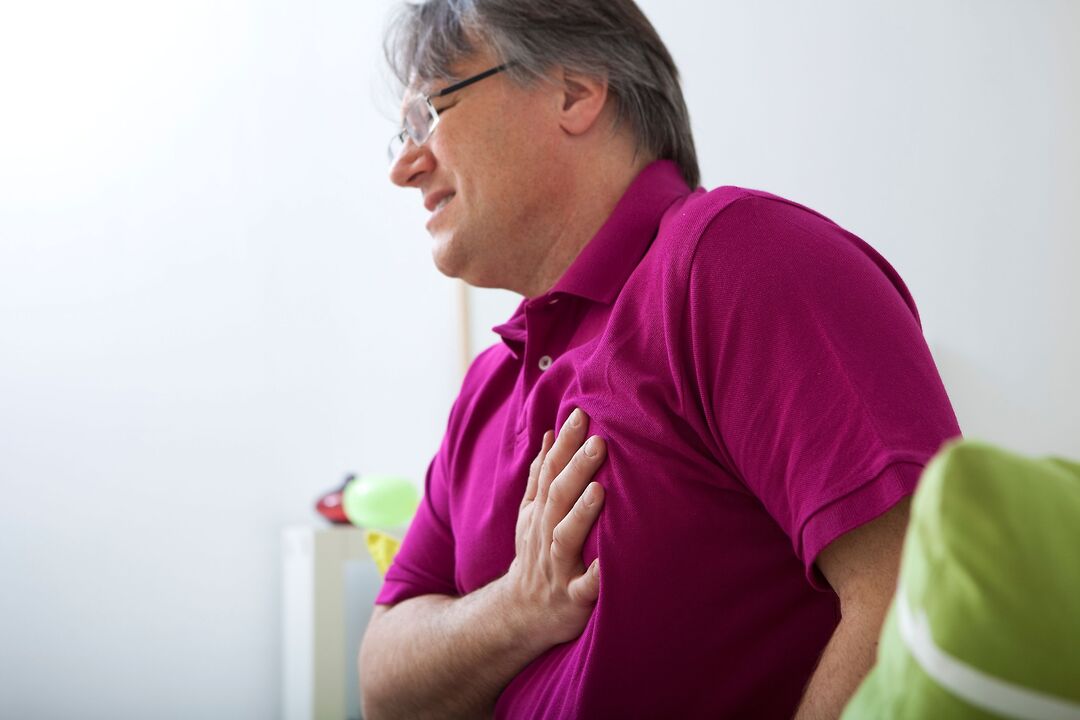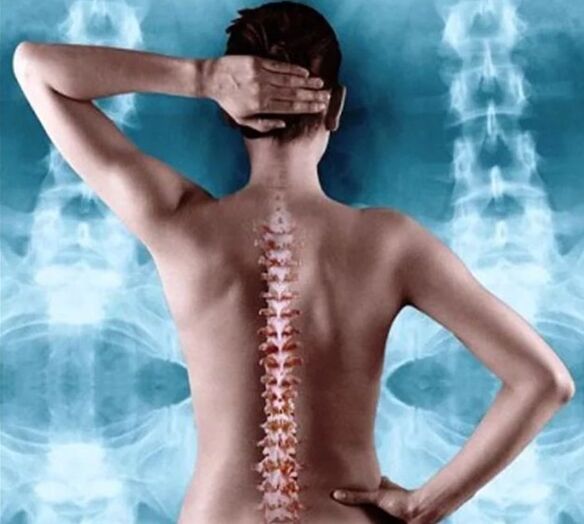
The human spine is one of the most important components of the musculoskeletal system, and a violation of its normal functioning always has negative consequences for the entire body. Thoracic osteochondrosis refers to degenerative-inflammatory diseases of the spinal discs in the thoracic region. The disease usually affects people over the age of 55, but can occur in any adult. In men, the disease is reported more than half more than in women.
In general, this part is the largest, including 12 vertebrae in the middle of the spine, but there are few diseases. This is due to the less movement and good protection of the corset. This structural feature is a positive factor, but in the diagnosis of thoracic osteosarcoma, it is difficult to determine and can be mistaken for other diseases for a long time, especially when there is temperature.
There are criteria for the 10th International Classification of Diseases (ICD-10), according to which osteonecrosis belongs to the group of sclerotic diseases (M40-54). There is a separate ICD-10 class for osteonecrosis of the spine - M42 according to ICD-10 and is considered deforming of the spine. Diagnosis is made according to code M42. 0 ICD-10 for youth and M42. 1 ICD-10 for osteonecrosis in adults. Code M42. 9 ICD-10 may occur with an unspecified pathology.
The reasons
Thoracic fibroids are less common than lesions in other parts of the spine. Many people do not go to the doctor for a long time because they think they have another disease. Statistically, this leads to the detection of the disease often in a severe form.
The disease occurs due to a decrease in nutrition and blood supply to the intervertebral discs. Formation of osteonecrosis can lead to disruption of the normal structure of the vertebrae. The elastic and decrepit properties of the spine are lost, and all this leads to the destruction of discs, ligaments and other structural components. As a result of such disorders, nerve roots are compressed and unpleasant symptoms occur.
It is almost impossible to find out the exact cause of the pathology. There is a cluster of risk factors among people and predisposing factors for the disease. As for the people themselves, this age is over 55 years old, female gender and spinal diseases increase the risk of disease. Deviations such as scoliosis, scoliosis, over time, violate the normal posture and alignment of the spine. As a result, the metabolic processes in the spine are disturbed and hard drives are formed.

There are factors that directly depend on the individual that lead to the pathology. Let's highlight the main points:
- excess body weight;
- abuse bad habits: alcohol, smoking, greasy food;
- sedentary lifestyle.
People who sit a lot in a sitting position are prone to diseases. This applies to office workers, tailors, operators, and drivers. A person who has suffered a back or spine injury should also be careful in the future. There is a group of people with inherited or acquired diseases, prone to diseases of the musculoskeletal system. The main conditions are diabetes mellitus, muscle weakness, disruption of the normal functioning of the glands.
Types and clinical picture
Signs of osteochondrosis of the thoracic spine depend on the degree of pathology and the neglect of the process. In total, four degrees of the disease are distinguished.
To the first degree, there is a violation of the elasticity of the intervertebral discs and a decrease in their height. The pain symptoms are not too strong and pass quickly with rest. Basically, pain is felt in the middle of the back and chest. Often the disease turns into a passive state and clinical manifestations appear only in the acute phase, which quickly stops and can be treated. Signs of intoxication are rarely present, sometimes the temperature may rise and weakness may appear. Temperature rapidly normalizes as the acute phase passes.
The second degree is more dangerous and can cause severe neurological symptoms. With this degree, the height of the discs of the spine is constantly decreasing, the elasticity is broken. The fibrous ring of the disc can become damaged and crack form. This stage is fraught with the threat of the appearance of a herniated disc.
The pain in the chest and back becomes stronger and eventually spreads to the surrounding area. With deep breathing or sudden movements, acute pain occurs. When nerve endings are damaged, symptoms spread along the ribs. During the exacerbation period, there is an increased temperature, general weakness. With this degree of disease, the sensation of numbness and "goosebumps" crawling at the site of injury. If nerve fibers are damaged, then normal internal development in the upper or lower extremities is disturbed.
Grade 3 thoracic osteochondrosis is characterized by the onset of herniated disc formation. There is severe pain that occurs in certain cases. Often the pain can increase at night, when you are in one position for a long time. Pain in the chest, back, along the ribs. With spinal cord exposure, the following symptoms may occur:
- violation of the endoscopy of the legs and arms;
- pain increases at night;
- pain in the esophagus, right hypochondrium, stomach;
- increased body temperature;
- problems with normal functioning in the digestive tract.

In the final grade, grade 4, the bone tissue of the spine is destroyed. There is a violation of mobility of the vertebrae, depreciated properties are reduced. Thoracic fibroids of this degree are dangerous because of spinal cord damage and impaired human ability to function. With an exacerbation, body temperature rises, severe pain in the chest, mid-back.
Among the general clinical picture, two main symptoms are distinguished - that is, back pain and back pain. Dorsago is characterized by a sharp pain in the chest. A person has a feeling of shooting in the chest after a long time in one position. During pain, breathing becomes difficult and the pain increases as the torso moves to the sides. This condition increases the temperature.
With back pain, you will feel some pain in the affected vertebrae. The painful symptoms gradually increased and lasted up to three weeks. The pain becomes stronger after taking a deep breath or exhaling and with movement. Symptoms worsen at night and are relieved with walking. The 10th International Classification of Diseases (ICD-10) assigns a code M54. 6 separately for back pain associated with chest pain.
Diagnosis and treatment
Thoracic fibroids with the right approach are not difficult to identify. The main thing is to conduct a differential diagnosis with cardiovascular pathologies and exclude other diseases. The presence of specific pain, fever, and neurological disturbances raise the doctor's suspicions.

The main diagnostic method is X-ray. It is necessary to image not only the affected part but also the adjacent organs to rule out complications. If adequate examination of the spine is not possible and if tissue and vascular damage is suspected, computed tomography and magnetic resonance imaging are indicated.
Thoracic osteosarcoma in most cases is treated conservatively.
The main thing in treatment is the complexity and individual approach.
Depending on the severity of the disease, there are treatment regimens at home or in the hospital. In any case, it is necessary to apply certain principles - this is a gentle regimen, restriction of weight lifting and playing sports, avoidance of overwork and strict observance of the recommendations of the doctor.
Sternum mastoid tumor in the acute period of the disease, when there is pain and temperature, it is necessary to lie down in bed. NSAIDs, analgesics are prescribed in the presence of pain and temperature syndromes. Perhaps a combination of ointments, physical therapy, and massage. This combination will help you quickly overcome the illness and regain composure.
The basis of the treatment of osteonecrosis is local action. Manual therapy will allow you to put the vertebrae in the correct position, massage, physical therapy (electrophoresis, ultrasound, magnetic therapy) and reflexology can restore nutrition. It is important that both men and women participate in therapeutic exercises and adhere to the treatment regimen.
With complications, traction or even surgery may be indicated. If not, symptomatic therapy is used.

























